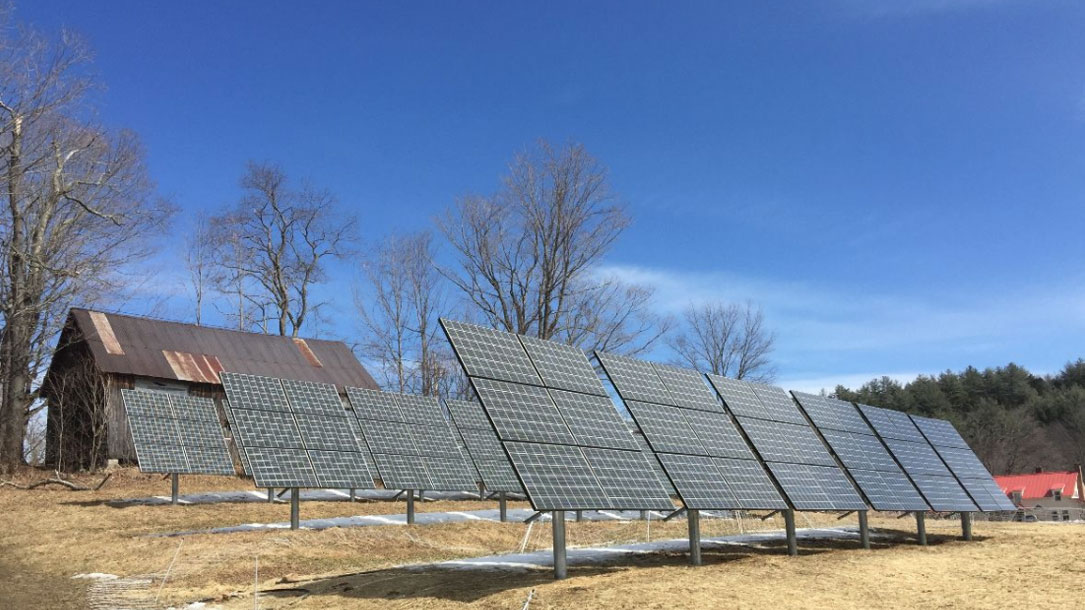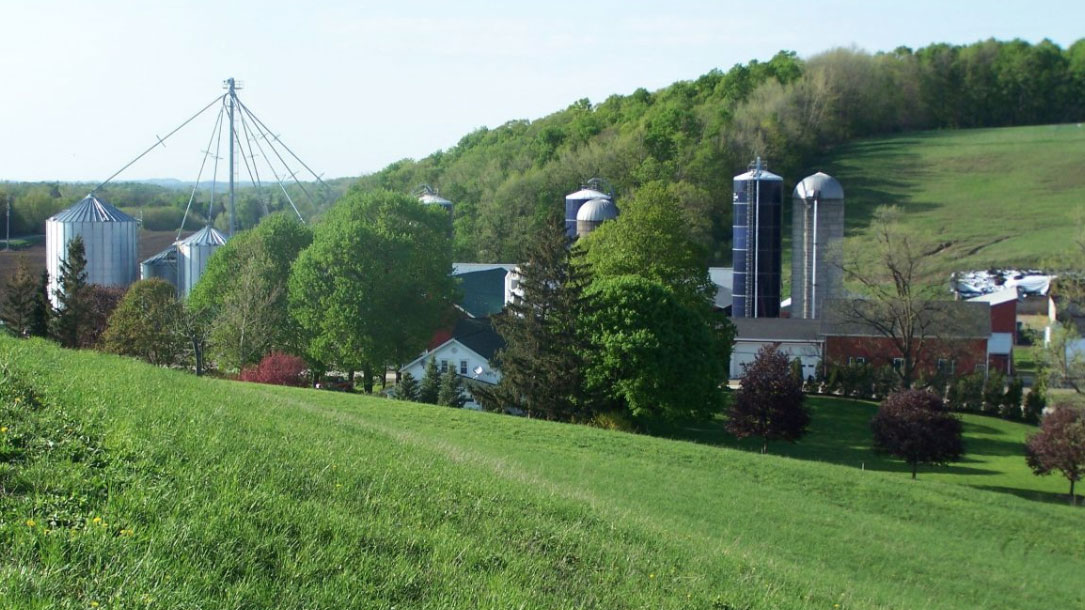Home > Climate News >

What businesses [including land trusts] should know about the evolution of rural solar
Solar projects certainly are growing rapidly throughout the United States, with total installed capacity just shy of 70 gigawatts and a contracted pipeline of 27.9 GW, according to SEIA. A recent Wall Street Journal analysis of EIA data reported that solar projects occupied 258,000 acres in 2018, while NREL estimates that solar will occupy 3 million acres by 2030.
That may be a small fraction of the nearly 900 million acres of farmland in the United States (PDF), but it’s enough to make agricultural communities apprehensive about the advance of solar onto previously pastoral land. While landowning farmers are grateful for the steady income that comes from leasing to solar projects, others in rural areas—including many state agricultural departments—are still grappling with what the growth of solar will mean for their concept of rural land and role as agricultural boosters…
And with wind and solar cropping up in more rural communities, the bar is being set higher. “The future for renewable energy has to include a sustainable land use component,” Hoosier Energy’s Cisney said. In leveraging new partnerships and co-location opportunities among developers, farmers and local communities, rural America has the potential to assume a more active leadership role in cooperatively advancing the clean energy transition…

Urban forestry takes on the world. But first, Rhode Island
Among dozens of new trees transforming a muddy Catholic elementary schoolyard, the pastor opened his Bible only a handful of pages, going full Old Testament in his impassioned spiritual plea for more trees.
Beside him stood Rhode Island’s Governor Gina Raimondo, who had just given an equally impassioned speech about the many scientific and public health benefits of trees. And when the children were unleashed with shovels to plant the final tree, it reminded everyone what perspective matters most: creating a stable future together…

Startups aim to pay farmers to bury carbon pollution in soil
Last summer, Boston-based Indigo Agriculture made headlines in business media with the announcement of its Terraton Initiative, which aims to pay growers to sequester one trillion tons of carbon dioxide.
Although Indigo is involved in a range of farm-related activities, from microbial seed treatments to agronomy (expert farm consulting, essentially) and crop transportation, soil carbon is a major focus. The company has promised that farmers who signed up for its carbon program before the end of 2019 will receive at least $15 per metric ton sequestered. Payments will be financed partly through the sale of offsets, which go for $20 per ton. As of late January, growers had committed more than 17 million acres to the program, according to Indigo’s website…
- « Previous
- 1
- 2












